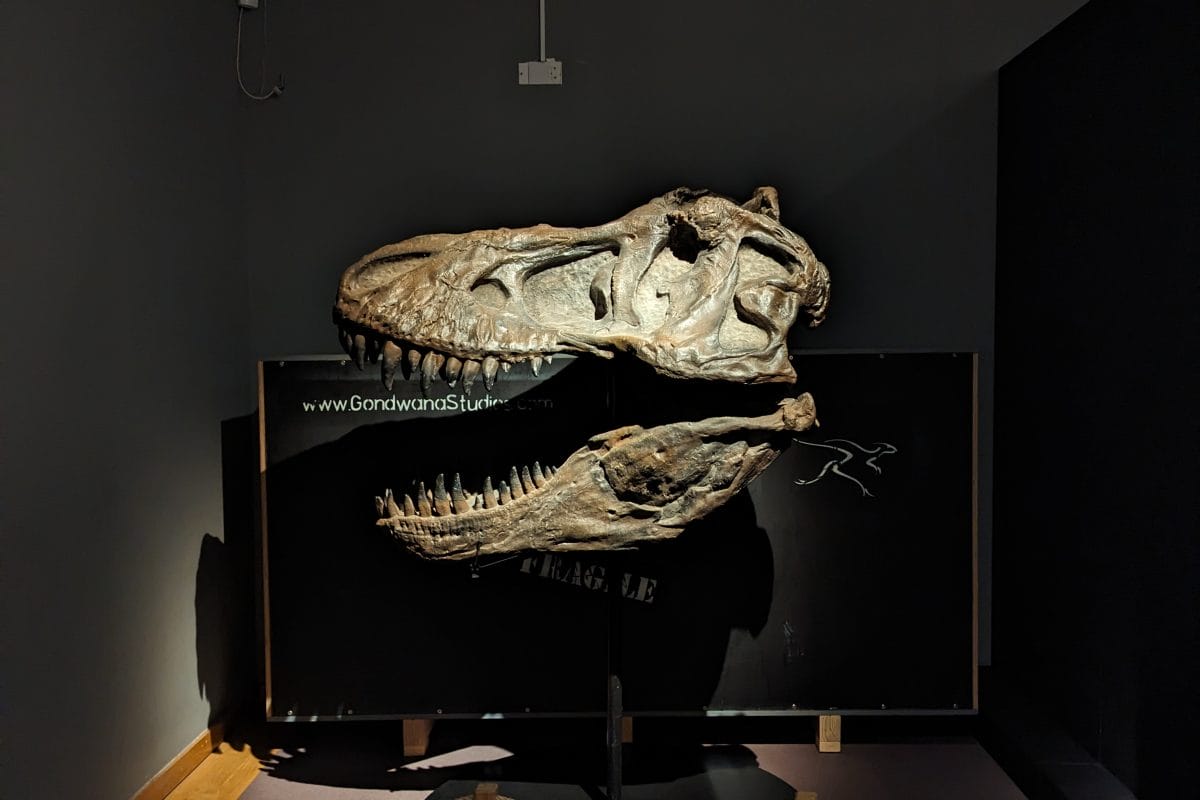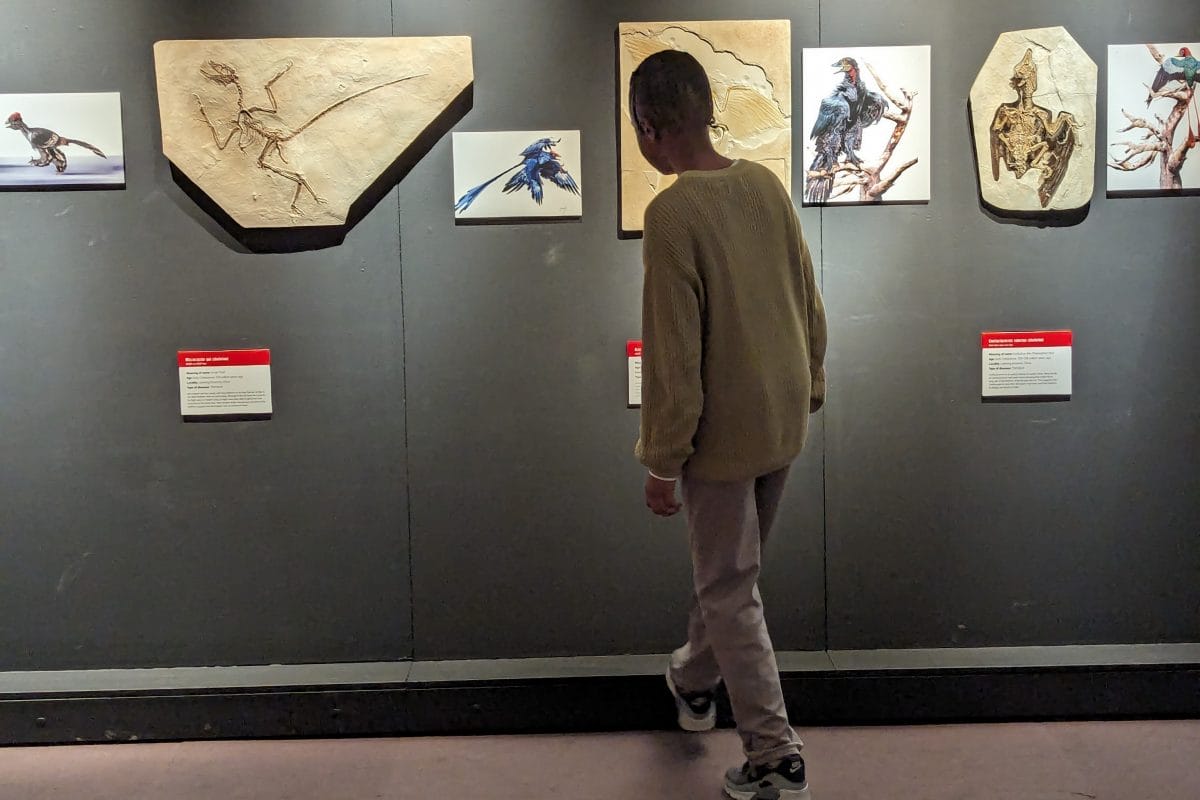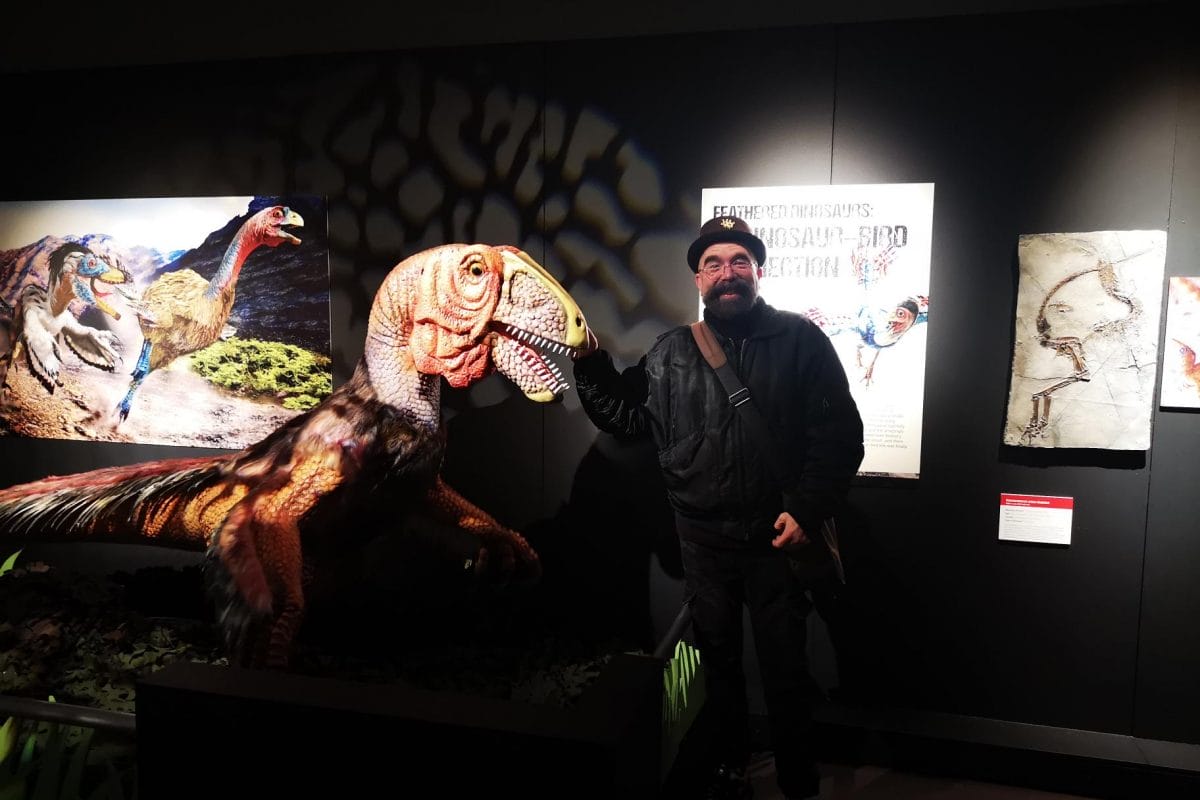Can you tell us about yourself and your work?
The Dinosaur Renaissance was a phenomenon in the study of the dinosaur world. It started with Dr John Ostrom comparing an Archaeopteryx with a dinosaur called Deinonychus.
He concluded that birds were definitively dinosaurs, and it started a revolution that extended from the 1960s to the 1990s and beyond. It was a revolution in the way we look at and think about dinosaurs.
I fully joined that movement. My first professional dinosaur illustration was in the 1980s and it was a flock of fully feathered Deinonychus. It caused a stir, since I also added a colour palette that nobody had dared to do for dinosaurs before.
Initially many palaeontologists catalogued me as a sci-fi artist. It took a while but at last at the end of the 1990s we were vindicated with the hard evidence we needed.
Thanks to the Dinosaur Renaissance dinosaurs are not just seen as iconic monsters, but as real animals, whose descendants live on as birds. I just keep my imagination tools ready and alive while not forgetting to do my science homework. I have served as the eyes of the palaeontologists’ imagination for many years in many books and publications.
My first book as an author was ‘Extreme Dinosaurs!’ and three of my favourite collaborations are Random House’s ‘Dinosaurs. The Most Complete Encyclopedia’ with Thom Holtz, ’Field Guide to Dinosaurs‘ with Henry Gee and a string of children books with Dr Robert Bakker.
Can you tell us all about Dinosaur rEvolution?
The more we look at fossils, the more fascinating discoveries we make. In Dinosaur rEvolution we have tried to convey the latest research by including the best casts available of a load of new specimens.
They include incredibly rare specimens, like a special cast of the complete Scelidosaurus fossil found by David Sole on the Isle of Wight. It has been made especially for this exhibition.
These exciting replicas are accompanied with life-size murals and 3D recreations of my own artwork. The Deinonychus I created and illustrated in 2000 is faithfully reproduced as one of the animatronics.
Chinese deposits finally showed us what the dinosaurs really looked like inside-out.
The two main branches of dinosaur evolution illustrated in this exhibition are Theropoda (like T. rex) and Ornithischia (like Heterodontosaurus).
We have discovered that theropods were covered in feathers or protofeathers in many instances. The latest surprise was that although they were depicted as scaly and armoured, many primitive Ornithischians were also covered in quills. Some even looked like porcupines!
So quills, filaments, protofeathers and scales were all found right at the base of the evolution of Dinosauria. That means that dinosaurs had different metabolisms and were different from any reptile we know today.
This was prominently reflected in their skin. The skin might hold the secret of their 169 million years+ survival. Primitive ornithischians were covered in quills – their bulky descendants lost them somehow, or simply substituted them with armour.
The illustrations are informative and educational as well as entertaining and artistic. How did you approach creating them?
I base my reconstructions on what I see in nature. I also consider that birds and reptiles have colour vision, a big difference to most mammals, with primates (including us) the exception. So doing my homework is essential and applying imagination is paramount.
I like the illustrations to be exciting and different and to look as 3D as possible. We still don’t know everything about dinosaurs but the research is ongoing and every day and every week we have a new piece to complete the dinosaur puzzle.


What is your favourite fact that you learnt during the curation process?
That to create an effective exhibition the fundamental issue is the idea. An exhibition should not be just a bunch of skeletons without a thoroughly researched theme.
I have seen many exhibitions that are notorious only because dinosaurs are attractive for general audiences. Dinosaurs should teach children about evolution too. An exhibition should entertain and at the same time provide the correct narrative and information.
If you wanted a visitor to take one thing away from Dinosaur rEvolution what would it be?
I would want them to take away my enthusiasm on studying dinosaurs. I would like to inspire them to take the torch! We need more palaeontologists and what is better than talking to those that might follow us one day?
What’s next for you?
A next exhibition… we need more venues! This is a passion that still continues after more than 30 years of constant work and discovery. Can you ever stop being a colourful Sherlock Holmes of the past? Impossible.
Exhibitions are a fantastic outlet for my own work, even better than illustrating and books, something that I have done all my life too. Exhibitions reach a wider audience, I think. So, let’s keep the flame alive!



